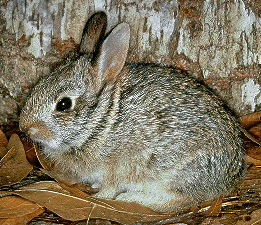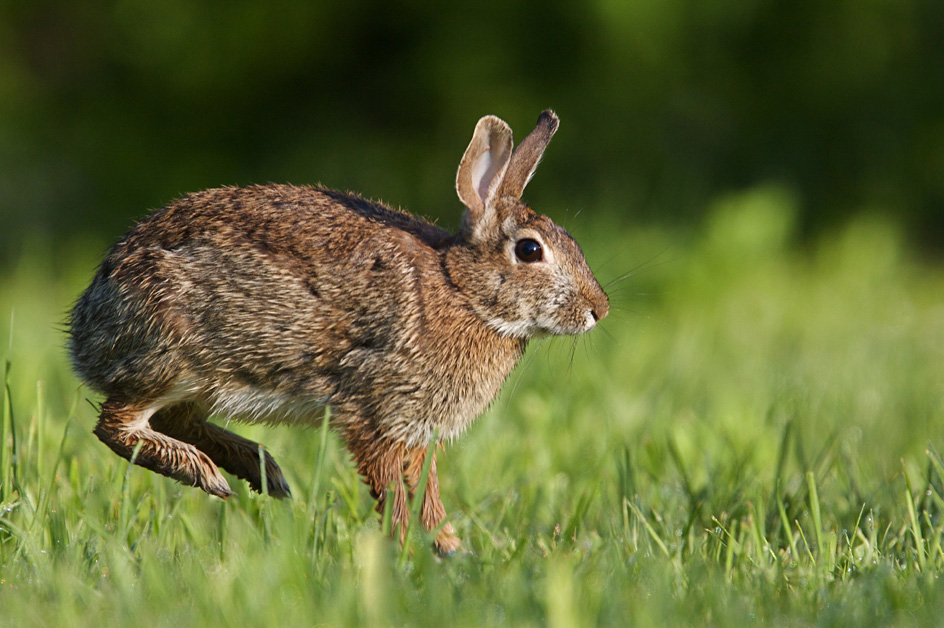Cottontail rabbit is a name for several species of wild rabbits found in North America and parts of Central and South America. Perhaps the most common species is the eastern cottontail. Cottontails live in fields, prairies, marshes, and swamps—wherever they can find bushes or clumps of tall grass in which to hide. They may also live in wooded areas bordering open country.
An adult cottontail rabbit grows about 21 1/2 inches (55 centimeters) long and can weigh up to 6 pounds (2.7 kilograms). Most species have fluffy white fur on the underside of the tail. The tail’s fluffy, cottonlike appearance gives the rabbit its name.
The cottontail rabbit ranges from reddish brown to gray in color. The animal sheds its coat once or twice a year and grows a new one. The eastern cottontail, for example, has a brown undercoat, with gray and black guard hairs covering the back. It sheds its coat twice a year. Its summer coat is shorter and browner, and its winter coat is longer and grayer.
The ears of cottontail rabbits measure about 2 to 3 inches (5 to 8 centimeters) long. The rabbits have sharp hearing. They can move each ear independently. They also have great eyesight, with large eyes giving an almost 360-degree view. Cottontail rabbits are herbivores (plant eaters). Their front teeth grow continuously, so they can gnaw on plants without wearing them down. Depending on the season, cottontail rabbits eat flower buds and stems, fruits, grasses, lettuce, legumes, and bark.
Loading the player...Cottontail foraging
Many animals hunt rabbits, which can protect themselves mainly by hiding or running from danger. Wild rabbits rarely survive beyond 6 years of age. Cottontail rabbits are fast, running in sprints of up to 18 miles (29 kilometers) per hour. They are also agile, turning in a zigzag pattern or jumping to escape predators (hunting animals). Rabbits may also remain motionless to blend in with their surroundings or move low to the ground to avoid being seen. Some species, such as the marsh rabbit, dive into water and use their great swimming skills to escape.
Cottontail rabbits spend most of the daylight hours resting in shallow depressions in the ground called forms. In cold weather underneath deep snow, a cottontail may take over another wild animal’s abandoned burrow and make a network of connected paths called runs. Cottontails live mostly solitary lives, but they share territory with others and come together for mating.
Because wild rabbits often die before reaching maturity, they must produce many young to survive. A female rabbit usually has four to five young at a time, and she may give birth several times a year. Female cottontails may bear about four litters of young per year.

A female cottontail rabbit carries her young, called kits, inside her body for 26 to 30 days before giving birth. The mother keeps the newborn kits in a nest she has dug in the ground. She lines the nest with fur pulled from her chest with her teeth. The mother stays near the nest and covers the kits with grass and fur to keep them warm. Kits develop a coat of soft fur around 10 days after birth.

About two weeks after birth, the kits can leave the nest for short periods. When the kits are three to four weeks old, they leave the nest permanently. Cottontail rabbits reach maturity in under a year.
